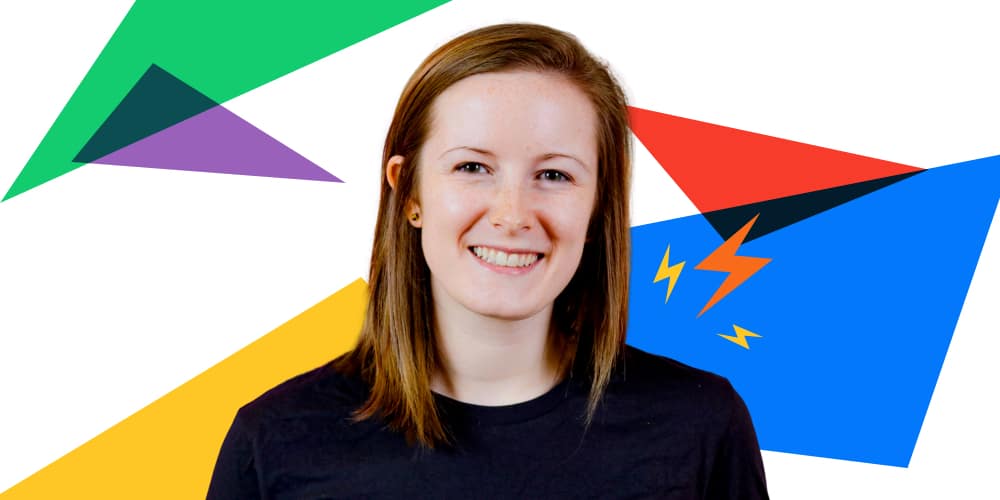
At Drift we pride ourselves on making a product that is customer-centric. Every decision we make, small or large, is rooted in making our customers successful. So our product and UX research teams work closely together to make sure that customers are involved in all stages of development – we frequently talk to users, run usability tests every two weeks, and get feedback on concept work.
Just a year ago, I joined Drift as the first UX researcher. And when you’re working at a hypergrowth company where things move incredibly fast and delivering daily results is expected, being the first anything can be daunting. But I’m happy to say that with the guidance of my manager, the support of my teammates, and a can-do attitude, Drift now has an established UX research function.
I know I’m not the only one who’s been the first UX researcher at a company. In fact, I’ve had a lot of conversations with Drift’s customers on how to go about setting up the function. So I decided to share what I’ve learned so far because I know there are a lot of companies who want to make their customers successful – and I may be biased, but forming a UX research function is a great way to do that ?
Here are some of the tactics I picked up along the way as the first UX researcher at a hypergrowth company. Before you launch your first research project, there are a few steps you can take to set yourself up for success.
1. Start with the right attitude
My first challenge was to bring UX research into the spotlight, get people excited about it, and weave it into our product culture. Through trial and error, I noticed that my coworkers were more excited about my research if I seemed excited by it. This makes a lot of sense when you’re trying to pioneer something in a fast-paced environment – people only have time to stop and look at the most important things. It’s on you to show them what the most important things really are.
I decided to leverage one of Drift’s leadership principles: putting the customer at the center of everything we do. So I made a shift to make UX research became more than my job – instead, it became the key to reading the pulse of our customers. What did I learn? When you show your excitement for your work, your coworkers will follow your example.
And beyond showing your excitement, you can offer help (especially when it’s not expected), pay extra attention to the details, and go above and beyond in order to prove the value of what you’re building.
2. Find an advocate
Even with the right attitude and an organization supportive of UX research, knowing where to start and how to approach my role was tricky. Luckily, I had a mentor and advocate at Drift to help me answer those questions.
If someone at your company is familiar with UX research, ask them for feedback and guidance. Is there a designer that talks to customers every time she starts a design project? Ask to join her customer calls and take note of how she tests her designs. Later on, you can offer to run customer calls and user tests on her behalf. Set up one on one’s with PMs, figure out who has big research need, and offer to run research projects with them.
The results from those projects will showcase the benefits of UX research to the rest of the organization. The sooner you ask for mentorship, support, and feedback from your coworkers, the better.
3. Set goals with your manager (and yourself)
Where do you want UX research to be by the end of the quarter? By the end of the year? How do you want to measure your progress? Establishing actionable goals helps inform what you will work towards in the long term.
Goals set benchmarks and showcase your progress over time, but they also build a roadmap to steer you in the right direction. More importantly, they make sure that your work is impactful and relevant to the rest of the company, and that this impact can be measured. It can be helpful to start with activity-based goals at first.
Here’s what worked for me. I set benchmarks for how many usability tests I wanted to run, how many features I gathered user feedback on for our designers, and which research skills I wanted to learn by the end of the quarter. At the beginning of each day, I knew exactly what needed to get done.
4. Stay frugal at first
Once I found a mentor and set clear goals for myself, it was time to start planning my first big project. At Drift, we embrace a scrappy and frugal culture so that we can invest in our customers.
Unfortunately, a lot of traditional UX research requires a budget to recruit and incentivize user testers. So how can you run your first research project with a small (or nonexistent) budget? Look no further than your own customers. Why? Because your customers are familiar enough with your product to give useful feedback, and invested enough to want to share their opinion.
My approach was to recruit from our customer base and incentivize them with something that everybody loves – swag. In fact, when I ran my first onsite usability tests, I emailed our most outspoken customers and invited them to our offices for feedback sessions. This allowed me to cut out expensive recruiting and incentive costs and collect the feedback I needed to get my research off the ground.
5. Start with evaluative research
Drift’s engineers and designers are accustomed to shipping updates and features every week, sometimes every day. For a UX researcher, this is a goldmine of evaluative research opportunities.
The goal of evaluative UX research is to figure out if your product is delightful and easy to use, which you can achieve through methods like usability testing. What makes evaluative research a great place to start? You can test what’s already there! Just pick a part of the product and put it in front of users. The insights gained from evaluative testing will have immediate value and will bring your entire team closer to the customer.
My first big project was establishing a usability testing process here at Drift. I set out to run quick and dirty usability tests every single month on existing features or prototypes. I found that directly impacting the product team without interfering with their current process, such as running usability tests on existing features, was an effective way to quickly prove the value of your research.
Using these five tactics, we’ve been able to develop a strong UX research program at Drift. Once we were set up for success, it was time to form a repeatable research project. Stay tuned for our next blog post, where we’ll explore how we manage usability testing.
Want to learn more about the intersection of product, engineering, UX research, and design? Here are two episodes you should listen to from our Build podcast:
-
What’s The Build Trap & What Does It Mean For Product Managers?
-
Getting Product, Engineering & Design In The Same Room: What Happens After You Write A One Pager
If you want to be a part of our UX research process, then you’re in luck! Our product team is hiring. You can get more details and apply to our Senior Product Manager position here or the Product Designer role here. Or learn about life at Drift here.





